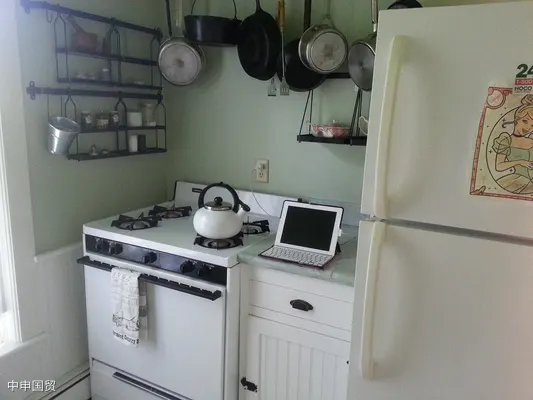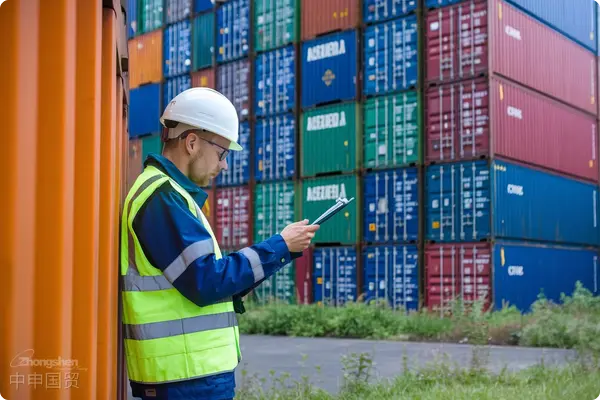- Shanghai Zhongshen International Trade Co., Ltd. - Two decades of trade agency expertise.
- Service Hotline: 139 1787 2118
According to data released by the General Administration of Customs in September, Chinas household appliance exports maintained double-digit growth in the first eight months of 2024 (January to August), with a year-on-year increase of 14.7%. This standout performance contrasts sharply with traditional labor-intensive industries such as apparel, footwear, ceramics, and toys, which all saw declining export growth rates.
Compared to the full-year growth rate of 3.8% in 2023, appliance exports in the first eight months of 2024 increased by 10.9 percentage points. A deeper analysis reveals that beyond the cyclical factor of overseas restocking demand, the globalization strategies of Chinese companies have had a more profound impact on the industrys growth.

Strong Factory Orders Domestically and Abroad
A brand manager from a Ningbo-based company stated that overseas demand has been strong this year, with factory orders booked through the end of the year. In the first half of the year, the companys exports grew by 23%. In addition to busy production lines, their sales team has actively participated in overseas exhibitions, attending over ten international trade shows this year. These efforts have enabled them to sustain growth rates exceeding 20% in key markets such as Europe and the U.S.
Another executive from a Ningbo-based small appliance manufacturer revealed that overseas demand has grown robustly this year, with double-digit growth expected for the full year. Xu Ning, Chairman of Guangdong Bangzhi Chuangke, noted that production at their domestic factories remains steady, while their Vietnam facility is even busier, with capacity continuing to expand. In the first half of the year, the companys revenue exceeded 700 million yuan, up approximately 37% year-on-year, with net profit nearing 70 million yuan, an 86% increase. He attributed the strategic setup of their Vietnam factory as the core driver of growth, enabling them to secure more global orders.
Unlike textile and apparel companies, which began overseas production layouts earlier, the more technologically advanced appliance manufacturing sector has only accelerated this trend in recent years. Half-year reports released by several appliance exporters at the end of August showed double-digit growth in both revenue and profit, with companies accelerating their overseas expansion in the post-pandemic era.
Globalization Strategy Boosts Performance
Leading appliance manufacturer Haier Smart Home reported revenue of 135.623 billion yuan in the first half of 2024, up 3.03% year-on-year, with net profit attributable to shareholders reaching 10.420 billion yuan, a 16.26% increase—outpacing revenue growth. Overseas revenue accounted for over half of total revenue, with growth rates in international markets exceeding those in China. Small appliance export leader Xinbao Co. saw total operating revenue of 7.723 billion yuan in the first half, up 21.53% year-on-year, with net profit attributable to shareholders at 442 million yuan, an 11.95% increase. Over 70% of the companys sales came from exports, primarily to the Americas and Europe.
Although tariff exemptions for certain appliance categories exported to the U.S. have been extended, the industry remains highly attentive to the U.S. election and potential trade policy changes. On September 13, the U.S. Trade Representative announced increased Section 301 tariffs on some Chinese goods. Against this backdrop, Chinese appliance companies have ramped up overseas expansion. In May, Haier inaugurated its eco-park in Egypt, with a total designed capacity exceeding 1.5 million units. In July, Haier Smart Home announced plans to acquire Electroluxs water heater business in South Africa. In August, Haier Smart Home held a groundbreaking ceremony for its factory in Thailand, which will become the largest air conditioning production base for a Chinese brand in Southeast Asia. Xinbao Co.s first overseas factory in Indonesia, established last year, has also seen steady order growth.
Xu Ning believes that appliance exporters without overseas production facilities, relying solely on domestic manufacturing, will face greater challenges. He noted that fourth-quarter orders primarily support Christmas sales, and some peers have already sensed a slight weakening in the market compared to the same period last year. Chen Dehuan also revealed that company executives have begun exploring factory setups and overseas warehouses in Southeast Asia and Latin America.
China Machinery and Electronicsimport and exportShi Yonghong, Vice President of the Chamber of Commerce, pointed out that in the first half of the year, Chinas direct exports of home appliances to European and American markets showed little growth, even experiencing negative growth. However, exports to major developing markets maintained growth, particularly in regions where Chinese companies have invested, such as Vietnam, India, and Mexico. Exports of intermediate home appliance products to these regions grew rapidly, often being assembled locally before being re-exported to European and American markets.
foreign tradePeak season brings both challenges and opportunities
As of August this year, Chinas home appliance exports have achieved year-on-year growth for 18 consecutive months. Typically, the foreign trade business in the home appliance industry is more prosperous in the second half of the year than in the first half. However, amid global economic downward pressure, most foreign trade practitioners have noticed that the peak season has become shorter and more concentrated compared to previous years.
In early September, the Shanghai Shipping Exchange reported a continuous decline in the Shanghai Export Containerized Freight Index, reflecting relative weakness in demand. Cargo volume on European routes has declined, intensifying market competition. On North American routes, due to expectations of port strikes in the U.S., some shippers chose to advance shipments, but overall demand still showed a decline.
From the corporate perspective, Xu Ning stated that while the home appliance market appears normal at present, external demand driving Chinas manufacturing exports may weaken. Tariff risks and fluctuations in the RMB exchange rate are their primary concerns.
Industrial upgrading fuels future development
In terms of supply chain competitiveness, Chinas home appliance manufacturing industry is not only expanding production capacity overseas but also moving toward branding, intelligence, and green development, driven by the rapid growth of AI technology and the smart home market. Xing Jun, Secretary-General of the Consumer Electronics Working Committee of the China Consumer Products Quality and Safety Promotion Association, noted that China has established a comprehensive home appliance industry chain, covering raw materials, components, equipment, finished products, distribution, and green recycling. This ensures overall safety and stability, facilitating the transition from low-end manufacturing to high-end, intelligent, and green equipment, which brings cost-performance advantages to products.
However, home appliances are labor-intensive industries with high demand for labor. As domestic labor costs rise, companies tend to shift low- to mid-end production to regions with lower labor costs while retaining high-value-added segments such as R&D centers in central and eastern China.
Overall, despite uncertainties in the international trade environment and global economic downward pressure, Chinas home appliance exports continue to show strong growth. Through globalized layouts and industrial upgrading, companies are expected to seize more opportunities in international markets and achieve sustainable development.
Related Recommendations
? 2025. All Rights Reserved. 滬ICP備2023007705號-2  PSB Record: Shanghai No.31011502009912
PSB Record: Shanghai No.31011502009912









